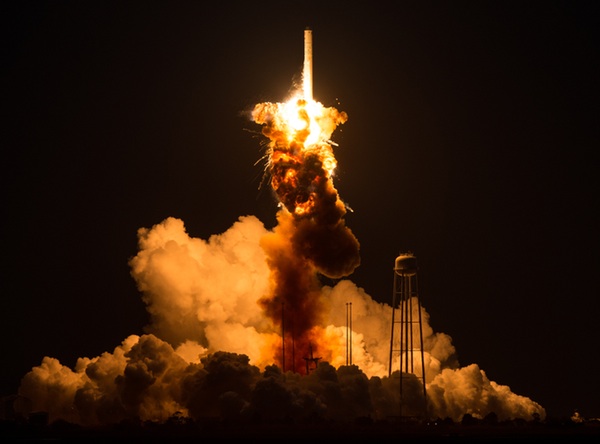Government and commercial space: an essential partnershipby Louis Friedman
|
| The Antares and SpaceShipTwo accidents don’t tell us to give up on commercial space… but they also tell us that we need to support the government and NASA in the bigger effort to go further. |
Especially important for the country is to support the NASA human space exploration program. Hand-wringing about American space policy is a common attitude among space enthusiasts and space interests. But that hand-wringing usually comes down to wanting more money, which everybody wants. The current US plan to focus human exploration on new ventures beyond the Moon and building up new capabilities for solar system exploration, while also providing support to fledging private development to take over the old ones in low Earth orbit and to international players who want to go to the Moon, is really pretty good. Yes, it needs more money, but not so much money as the unsustainable “Apollo on steroids,” “Mars Direct,” or the National Research Council’s “build me a nuclear rocket” programs that get unrealistic enthusiasm and promotion. Moreover, the current plan is working: the Space Launch System and Orion are not a done deal but they, and the asteroid mission development plan, are holding up pretty well even with nearly dysfunctional Congressional funding. The government program has also taken on the task of creating opportunity for private development to, and maybe in, low Earth orbit.
In recent years much of the initiative and inspiration in space seems to belong to the private developers. Brilliant young graduates want to work for SpaceX or other start-ups; Google, the hallmark of entrepreneurship, sponsors a private lunar landing race; billionaires invest in new rockets. It is pretty clear that these new initiatives will be many years in the making and have their own share of setbacks and delays; at least a few, if not most, are unsustainable. Meanwhile, NASA is proposing to move a piece of the solar system, a near Earth asteroid, in order to move up the time scale of human space exploration by five to ten years. No private effort, nor any other government, can do that or get us beyond the Moon leading the way into the solar system on such a time scale.
This is what government does best. Certainly it is what NASA does best: science and technology, driven not by short-term gain but instead by long-term exploration. The Antares and SpaceShipTwo accidents don’t tell us to give up on commercial space, indeed because they are an expected part of rocket science and rocket engineering they tell us to keep encouraging it. But they also tell us that we need to support the government and NASA in the bigger effort to go further, do the hard things and learn more.
